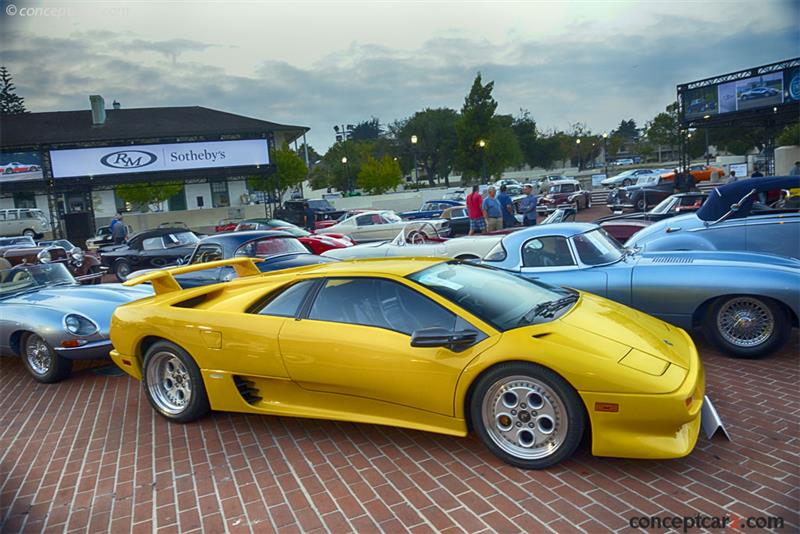The Lamborghini Diablo took its origins and original architecture of the Countach, defined by Paolo Stanzani in 1971. Its engine still resided at the rear central position longitudinally, and the gearbox and its lever protrudes into the cabin. The twelve-cylinder engine was similar to the Countach 'Quattro Valvole' of 1985, but modifications made it more docile. The 5.7-liter displacement of the Diablo exceeded that of the 5.2-liter unit powering the Countach 25th Anniversary. It was more powerful and flexible, and fitted with an electronic injection system developed in-house, using parts from Weber-Marelli and a catalytic converter. Its 492 horsepower exceeded that of the Testarossa by 122 horses. 
CoupeThe multi-tubular steel frame architecture was sourced from the Countach but with a larger and stronger central cage, front and rear sub frames were designed to absorb violent shocks, and the central beam was made of composite material. It had a 15cm longer wheelbase which allowed Marcello Gandini to design a smoother and longer form while remaining true to the design language of its predecessors. Gandini, who had designed the Espada, Countach, and Miura, managed another tour de force with the Diablo. Introduced on January 21st of 1990, the Diablo was a long-overdue replacement for the Countach, which had been on sale in various guises since 1974. The Diablo was endowed with creature comforts not traditionally associated with Lamborghini products or with supercars, including power windows and mirrors, and air conditioning. Steering remained unassisted on early examples, as did anti-lock brakes. Optional equipment included a custom-molded driver's seat, rear spoiler, factory fitted luggage set, an exclusive Breguet clock, and a remote CD changer and subwoofer. The Diablo remained in production from 1990 to 2001 with 2,884 examples built during that time, including 401 examples built during its inaugural year. Development had begun in June of 1985 under the codename Project 132. At the time, the company was financed by the Swiss-based brothers Jean Claude and Patrick Mimran. Chrysler acquired the company in 1987 and funded the project to completion, adding design input along the way. Their design team in Detroit was commissioned to create the third redesign of Gandini's original design, 'softening' the shape and removed many of the sharp edges and corners. Gandini's original design was later realized in the Cizeta-Moroder V16T. 
CoupeThe name 'Diablo' continued the company's tradition of naming its cars after breeds of fighting bulls. The source of the Diable was a ferocious bull raised by the Duke of Veragua in the 19th century. During its production lifespan, numerous modifications were made including several prototypes. The first prototype was introduced at the Geneva Motor Show in 1992, a 'roadster' version that demonstrated what an open-top version might look like. The Diablo VT was introduced in 1993, adding an all-wheel driving system that used a viscous center differential, responsible for the 'VT' portion of the name (viscous traction). Additionally, the VT added front air intakes below the driving lamps, larger intakes in the rear arches, four-piston brake calipers, power steering, and a more ergonomic interior with revised electronically adjustable dampers. The Diablo SE30 also arrived in 1993 as a limited-production special model in honor of the company's 30th anniversary. Modifications to the engine boosted output to 523 horsepower. It used magnesium intake manifolds, a free-flowing exhaust system, a tuned fuel system, and adjustable stiffness anti-roll bars. The power glass side windows were replaced with fixed Plexiglas, reducing the vehicle's overall weight. Non-essential amenities were removed including the power steering system, air conditioning, and stereo. Race-like features included carbon fiber seats with a four-point race harness, and a fire suppression system. 
CoupeUnique design elements applied to the SE30 included special magnesium alloy wheels, SE30 badging, a new metallic purple paint color, rear cooling ducts with a vertical body-colored design, slats covering the narrow rear window of the engine lid, the addition of a larger spoiler, and the front fascia wearing straked brake cooling ducts and a deeper spoiler. The raging bull emblem usually residing on the front of the luggage lid was relocated to the nose panel between the front indicators. Lamborghini produced 150 examples of the SE30 models and approximately 15 were converted to 'Jota' specifications. The 'Jota' was a factory modification kit designed to transform the SE30 (essentially the street-legal race car) into an actual circuit racer. Approximately 28 Jota Kits were produced. Along with exterior revisions, the engine was tuned to produce nearly 600 horsepower and 471 lb-ft of torque. The rear-view mirror was removed, the engine lid was revised, and two ducts protruded from above the roofline directing air into the intake system. The Diablo SV arrived in 1995 and revived the Super Veloce title introduced on the Miura SV. Introduced at the Geneva Motor Show, the Diablo SV was devoid of the four-wheel-drive system of the VT, with its engine tuned to produce 510 horsepower at 7,100 RPM and 580 Nm of torque at 5,900 RPM. Standard equipment included an adjustable rear spoiler, black tail lamp surrounds, dual front fog lamps, additional front brake cooling ducts, larger-diameter front brakes with larger 18-inch front wheels, and repositioned rear fog and reverse lamps (similar to the setup of the SE30). The engine lid was also similar to the SE30 Jota. 
CoupeA United States-only special edition of the Diablo SV was introduced in 1998 and limited to just 20 examples. It was called the Monterey Edition and came with the SE30/VT Roadster style of air intakes in front of the rear wheels. Several of the Monterey Edition cars wore vibrant colors. In December of 1995, Lamborghini introduced the VT Roadster which used an electronically operated carbon fiber Targa top that was stowed above the engine lid while not in use. Along with the roof system, the VT Roadster had relocated brake cooling ducts which were moved inboard of the driving lamps, and the rear ducts used the vertical painted design used on the SE30. The quad rectangular driving lamps were replaced with two rectangular and two round units, and the front bumper was revised. The roof panel resting above the engine lid meant that additional cooling vents were needed, along with larger air vents. Initially, 17-inch wheels were standard, growing to 18-inches by 1998, the same time engine output increased to 530 horsepower thanks to a variable valve timing system. Approximately 200 examples were built from 1995 through 1998. 
Coupe1999 introduced a second generation of the VT and VT Roadster and the Diablo SV. The Diablo GT was introduced in 1998 and 80 examples were built. The Diablo VT 6.0 and VT 6.0 SE wore significant styling changes both on the inside and outside. Approximately 40 examples were SE models built from 2000 to 2001.
by Daniel Vaughan | Jun 2021
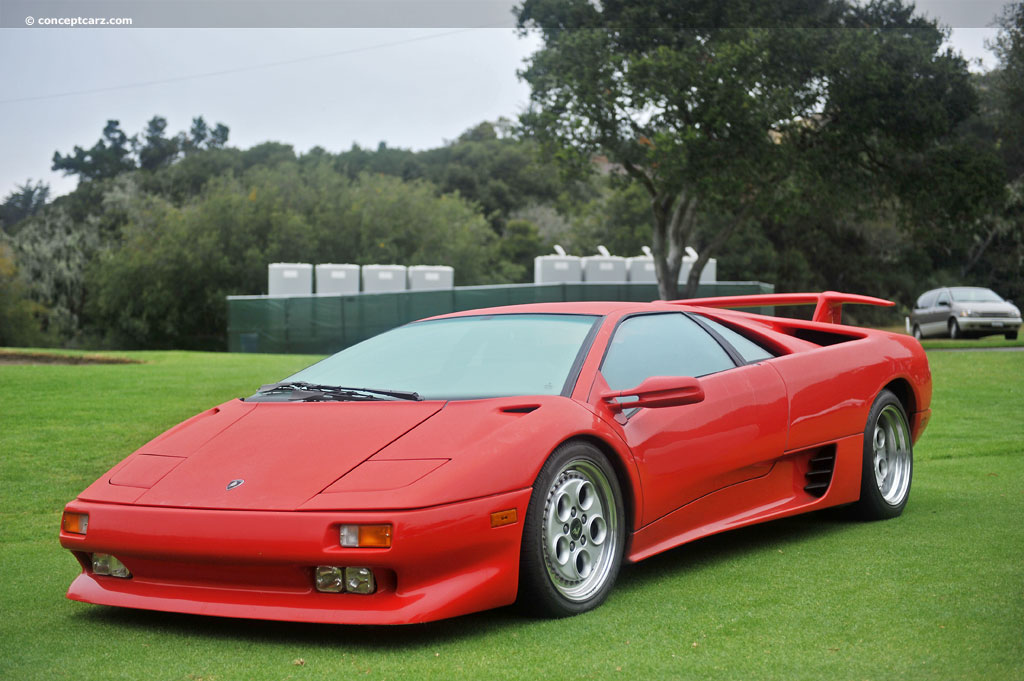
Coupe
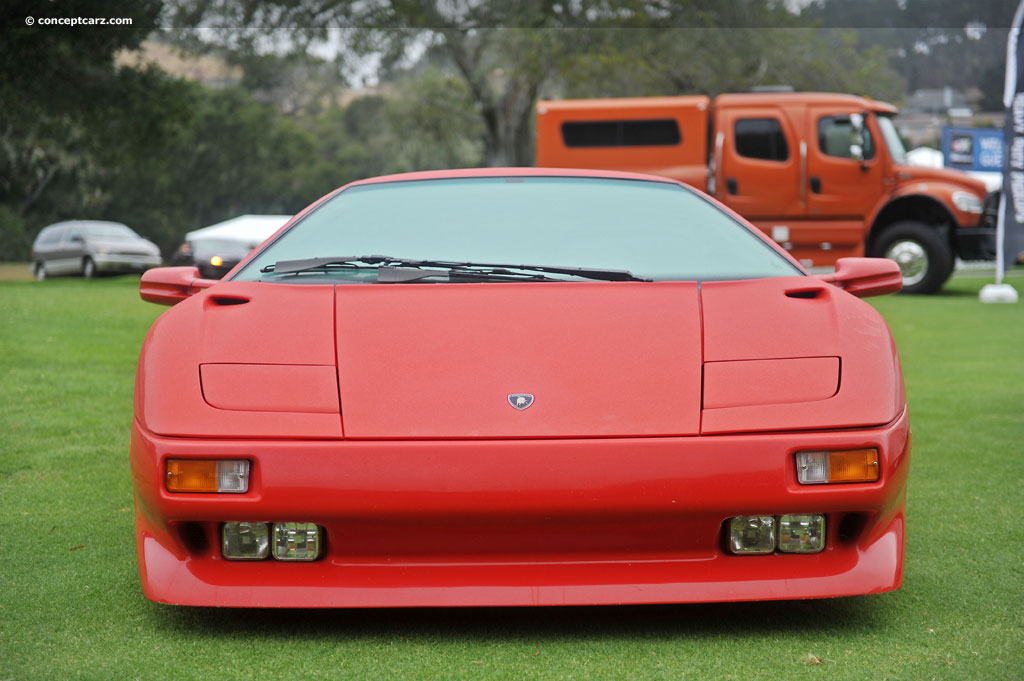
Coupe
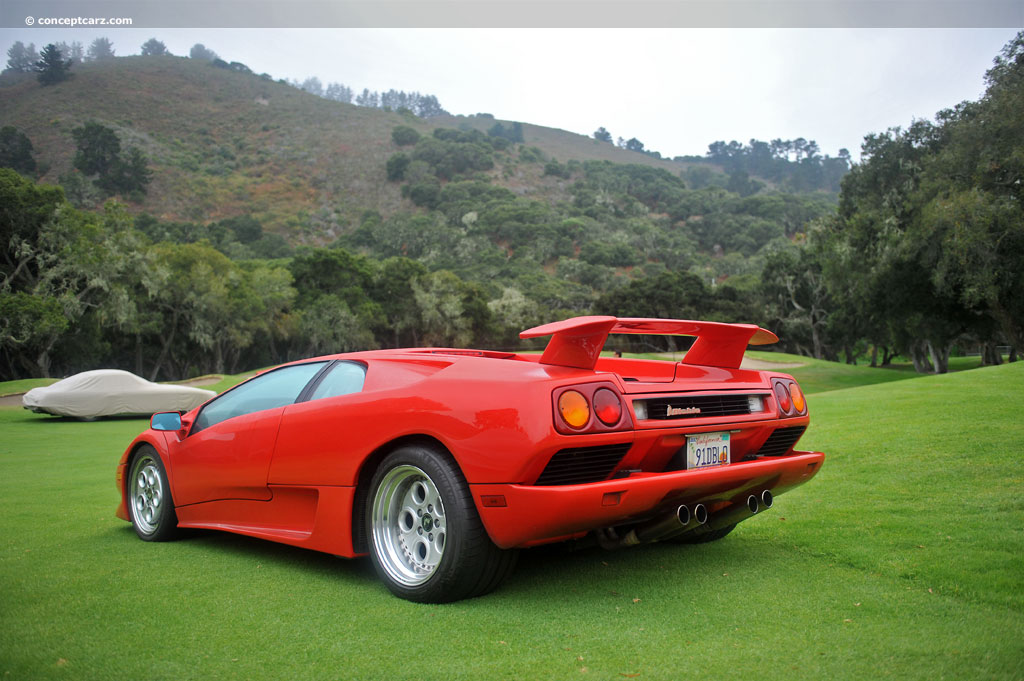
Coupe
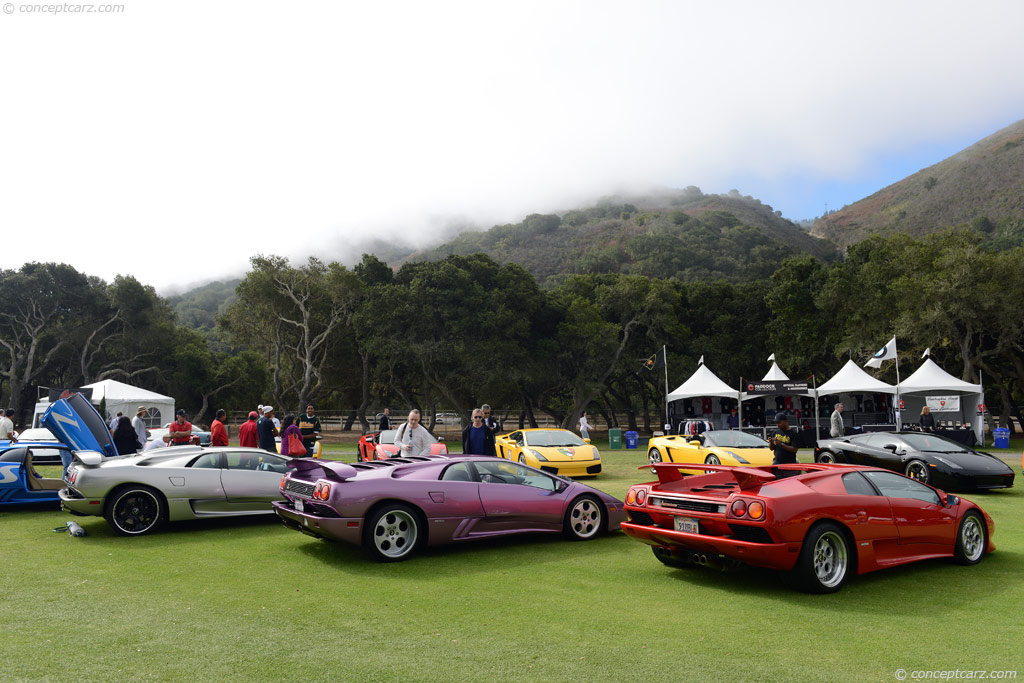
Coupe
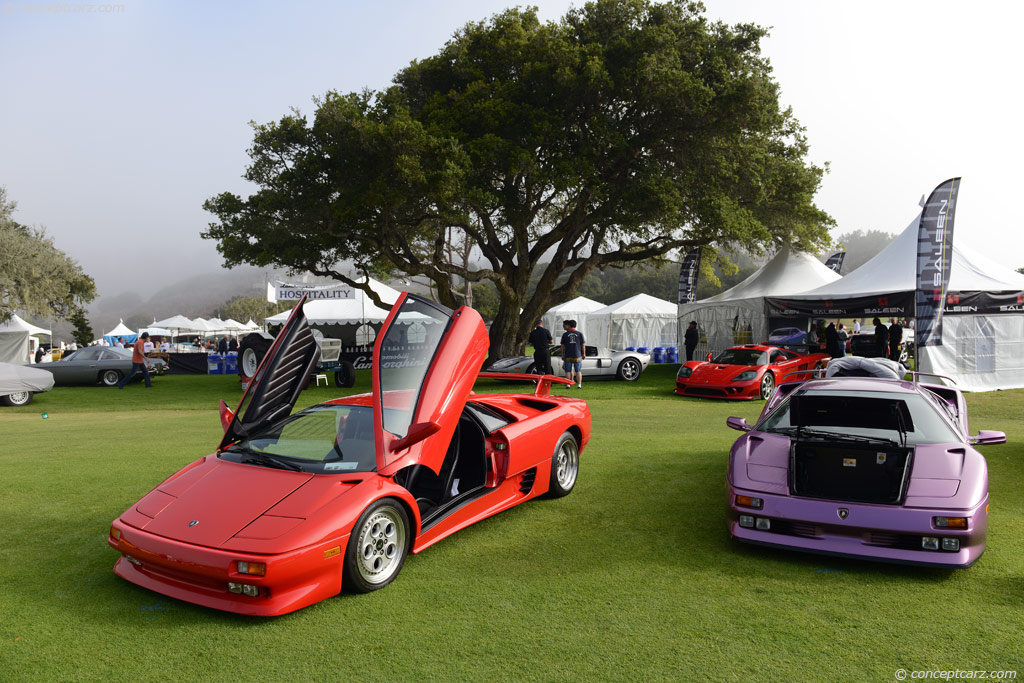
Coupe
by Daniel Vaughan | Jun 2021
Related Reading : Lamborghini Diablo History
In 1985 Lamborghini began designing and developing a replacement for their successful Countach model. The Lamborghini Diablo was introduced in 1990 and stayed in production until 2001. The name Diablo is Spanish meaning devil and was borrowed from a type of legendary bull raised by the Duke of Veragua in the 19th century. The goal for the Countach replacement was to achieve a 315 Kmh top speed.....
Continue Reading >>
Continue Reading >>
Related Reading : Lamborghini Diablo History
Replacing the Lamborghini Countach, the 2-door Lamborghini Diablo SV coupe was introduced in 1990. With a total of 2,903 units produced during its lifetime, the Diablo in the name stands for devil in Spanish and truly classifies the high-performance supercar built by Lamborghini of Italy. Unveiled on January 21, 1991, the Diablo was introduced at a base price of %24240,000. The Lamborghini Diablo....
Continue Reading >>
Continue Reading >>
Similar Automakers
1991 Lamborghini Diablo Vehicle Profiles
Recent Vehicle Additions
Performance and Specification Comparison
Price Comparison
$52,092
Diablo Specification Comparison by Year
Year
Production
Wheelbase
Engine
Prices
Related Automotive News

All New Nissan Micra: The Revolution Has Begun
Fifth-generation supermini on sale now, at the heart of the B-hatchback segment
Dynamic hatchback proportions, with expressive and athletic exterior design and strong character lines
Uplifting interior with high-quality materials, class-leading dr...

FIAT 124 SPIDER MAKES ITS EUROPEAN DEBUT AT THE 2016 GENEVA MOTOR SHOW
New FIAT 124 Spider debuts in Europe, powered by a 1.4-litre MultiAir Turbo Petrol engine producing 140hp and 240Nm
Acceleration from 0 to 62mph takes just 7.5 seconds and top speed is 134mph
High standard specification on all UK FIAT 124 Spiders...

ALL-NEW 2015 ALFA ROMEO 4C SPIDER PRICING ANNOUNCED
All-new 2015 Alfa Romeo 4C Spider Delivers Race-inspired Performance, Advanced Technologies, Seductive Italian Style, and Now an Even More Exhilarating Driving Experience With Open-air Freedom
All-new Alfa Romeo 4C Spiders open-air performance ****...

World-premiere: All-new 2015 Alfa Romeo 4C Spider Delivers Race-inspired Performance, Advanced Technologies, Seductive Italian Style, and now an Even More Exhilarating Driving Experience With Open-air Freedom
Production version of the all-new 2015 Alfa Romeo 4C Spider, revealed at the 2015 North American International Auto Show, will arrive at dealerships this summer All-new 2015 Alfa Romeo 4C Spiders open-air performance cockpit and mid-engine propo...

Techno Classica 2014: more than 30 racing cars to celebrate 120 years of Mercedes-Benz motor racing history
Cars that were the heroes of magical moments put their stamp on this high-powered, most comprehensive show presentation
With more than 30 vehicles, Mercedes-Benz Classic presents motor racing history in all its unique breadth and depth
120 years o...
























